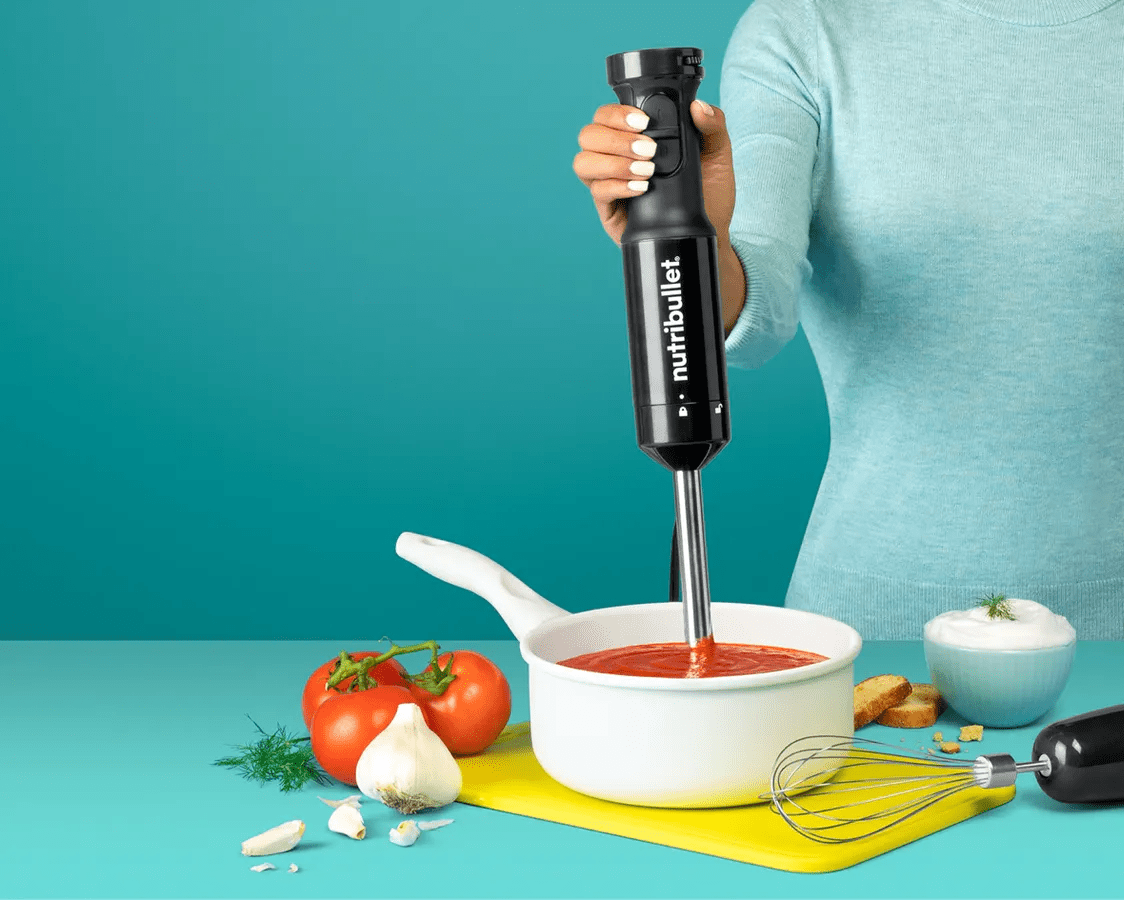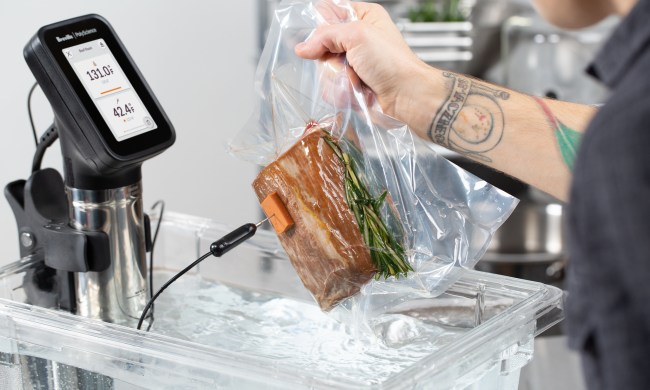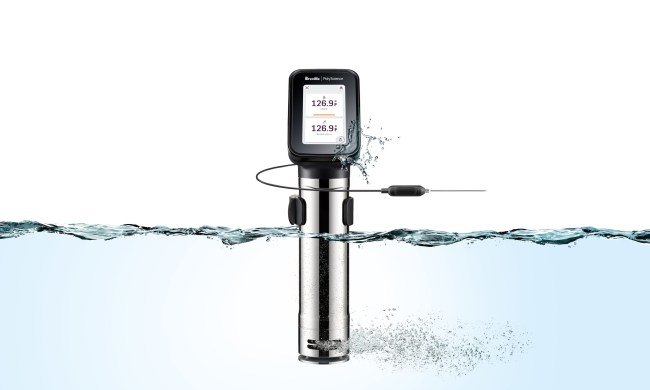Most tend to think an immersion blender (“stick blender” or “hand blender” to some) is kitchen gear best left to collect dust in a drawer, used sparingly for random projects. Many felt the same way about standing blenders (or, you know, just “blenders”) until NutriBullet came along.
NutriBullet’s lineup of low-cost, powerful, easy-to-use kitchen gadgets quickly became legendary. Chances are you know someone who has humble-bragged about having a NutriBullet blender. The question is, can NutriBullet make immersion blenders cool again?
We gave it a spin (yes that’s a bad dad-joke, get over it) to find out. Here’s our honest review.
Pros
- Solid, compact design
- Easy-to-understand speed dial
- Dual-speed trigger is responsive
Cons
- My unit had apparent manufacturing flaw in blending arm
- No cord management
- Design hinders motor potential
Delivery, unboxing, and setup
The NutriBullet Immersion Blender is packed in a box roughly the size of a very large book. You can get it delivered via FedEx, UPS, or USPPS without any issue. Mine arrived via USPS and was left in a locker at my neighborhood mailbox hub, so don’t worry about being home when the package arrives.
The immersion blender is packed carefully with tons of cardboard dividers. You get the blender motor body, a blending arm, and whisk attachment.

What users say
The NutriBullet Immersion Blender has a 4.8-star rating on the NutriBullet website, and 4.6 stars on Amazon with 12 and four reviews, respectively.
None of the three four-star reviews on the NutriBullet website have anything negative to say about the immersion blender. Of the two four-star reviews on Amazon, one reviewer knocked the NutriBullet Immersion Blender for its weight and lack of “buffer” at the bottom of the blending arm to protect the vessel you’re cooking/blending in.
Initial impressions
I didn’t find the NutriBullet Immersion Blender heavy at all. The motor body is dense, sturdy, and heaver that it looks, but it’s not too heavy in any way.
The blender arm and whisk both lock into place with a quarter-turn onto the motor body; I really like the ease of use, here. My daily-driver Breville has a different locking mechanism that can be a bit tougher to navigate, especially in the heat of a cooking project.
I was a bit surprised the motor body and blending arm were so slim. Most immersion blenders seem designed to elicit confidence by way of size. NutriBullet delivers a more powerful motor than most others (350 watts) in a tighter package. The blending arm and whisk attachment are also skinnier than the competition. NutriBullet again delivers a simple, straightforward, effective unit for the kitchen.

After one week of use
Let’s get something out of the way: my NutriBullet Immersion Blender blending arm performed admirably, but has a part loose in the arm itself. It rattles like a baby rattle. Performance doesn’t seem to suffer as a result, but it’s concerning.
Powerful as the NutriBullet Immersion Blender is, its basic design doesn’t take advantage of its 350-watt motor. The best comparison I can make is to my Breville Control Grip, which is technically less powerful than the NutriBullet Immersion Blender but more performant due to its design.
I tested both blenders in a tall container with 400ml water to see what kind of vortex they created on high speed. The NutriBullet surfaced a wave up to the 700ml mark, while the Breville reached past 850ml.
My suspicions about design came to pass in use, too. The NutriBullet was a bit slower to bring together vinaigrettes, blend marinara fully, and whip cream with the whisk attachment than the Breville Control Grip.
But let’s also be honest I’m comparing a $50 blender to one twice the price, so you get what you pay for. I will also point out the NutriBullet Immersion Blender’s price point is a bit higher than entry-level models which typically cost around $30. Compared to those, the NutriBullet is a massive upgrade. It’s variable speed dial on the top of the motor body is excellent, and the dual-power (low and high, of course) trigger is responsive and easy to hold down; this matters when you’re blending a massive pot of soup, sauce, or whipping cream (which takes a hot minute).
Attachments matter, and I really like NutriBullet’s twist-on mechanism for attaching the blender arm and whisk. I also really like that both have a flat “head”; you can take them off and sit them upright after use, which – trust me, when you’re making whipped cream, is a huge plus.
Conclusion
I’ve been an immersion blender fan for years, dating back to my days as a professional chef. A good one is core to my kitchen experience, and the NutriBullet Immersion Blender is absolutely worth buying.
Let me break down how to approach your immersion blender purchase: if you’re looking at a $20-30 immersion blender, just get the $50 NutriBullet Immersion Blender instead. It’s far more powerful, and its attachments are easy to get on and off the machine. (I’ve had $30 immersion blenders. You don’t want them. I don’t care what brand name they are. Avoid at all cost – and yes, that’s another bad dad-joke.)
If you’re way-too-fancy about cooking like me, you’ll find slight niggles with the NutriBullet Immersion Blender. There’s nothing prohibiting me from recommending you buy it, though. It’s small, durable, powerful, and gets the job done without hesitation.
The NutriBullet Immersion Blender is available for $49.99 on the NutriBullet website, and is $39.00 at the time of publication on Amazon.




